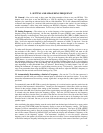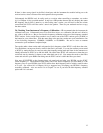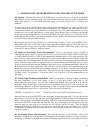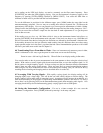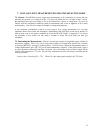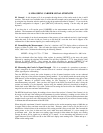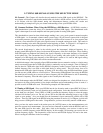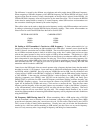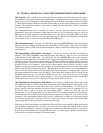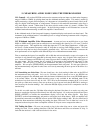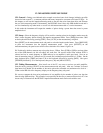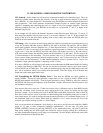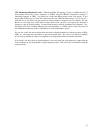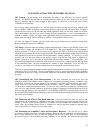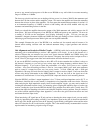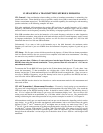19
10. TUNING A SSB SIGNAL USING THE NOISE/DEMODULATION MODE
10.1 General – The A and B versions of the HP-3586 have SSB channel modes that speed the setup of
the instrument for reception and measuring of SSB signals. Unfortunately the C version doesn’t have these
modes but can still be configured to tune SSB signals using the method I described previously in Chapter
9. The noise/demodulation mode was designed for measuring noise and copying SSB signals on telephone
channels. The demodulation feature is very useful for tuning SSB radio signals but I haven’t found much
use for the noise feature.
The noise/demodulation mode is basically the same as the low distortion selective mode except it
automatically selects the instrument’s widest band pass filter and sets its frequency display to show the
SSB signal’s carrier RF frequency or the RF frequency of a tone used to find a SSB channel on a phone
line. This last feature is useless for our radio type measurements. But the carrier frequency display mode
is very useful since this is the usual way of defining radio SSB signals.
10.2 Instrument Setup - Configure your HP3586 by pressing [NOISE/DEMOD] on the measurement
mode sub panel to configure the instrument for demodulation of SSB signals. Press one of the channel
select buttons [LSB] or [USB] located under the frequency display to match the sideband used on the band
you’re tuned to.
10.3 Determining a SSB Station’s Frequency – I’m going to use the same CCA net example of
chapter 9. First press [CARRIER] on the frequency/entry sub panel if it’s light isn’t on to read the SSB
carrier frequency of the SSB station. You should now see the CARRIER annunciator on the frequency
display on. Then confirm the net is on the air and it’s approximate frequency using my 75A4. I next tune
a frequency close to the net control operator using my HP3586 by setting it for proper side band and using
the entry keyboard. Then fine tune using the frequency control knob on the HP3586 and the procedure
described section 4.11 of Chapter 4. Since the Fo oscillator output is always tuned to my filter’s center
frequency it will still not be the same as the frequency on my LED frequency since I’m in the carrier tuning
mode for the SSB channel measuring modes. But after tuning for best audio in the noise/demodulation
mode I can easily change modes to move the center of my filter’s band pass by changing modes. Just go to
the measurement/mode sub panel, press [LO DIST]. Notice the display frequency doesn’t change but the
CARRIER annunciator goes out and the CENTER one goes on. Now I have moved my Fo output
frequency right onto the net control’s carrier frequency. I now will turn down the volume of the HP3586
speaker and use my 75A4 receiver to copy the net and proceed to check into the net.
10.4 Measuring the Strength of a SSB Station – After tuning in a SSB station for best audio in the
auto 10db mode, while in the entry range limit setting mode press [100db] under the analog meter to use
the 100db range for more for stable and reliable radio signal level measurements. To slow down the
display variations and better represent the received station’s average power, turn on averaging or be sure
the [AVE] button’s light is on below the measurement display. Choose the units you want the
measurements in, you can choose dbm or use an offset and db.77V to make the readings more like that of a
S meter and referenced to 100uv as previously explained in section 9.4 of Chapter 9. If we now look at the
instrument’s level measurement display while receiving a SSB station we should see it deflecting upward
every time its operator talks. If you get an OL or UL on the level display, increase or decrease the 100db
range’s upper limit setting to get into an accurate measuring range.
With some A and B versions there is an additional WTD noise filter in series with the 3100Hz filter usually
used for SSB on telephone lines. You may want to switch to the widest filter without WTD for more
accurate level measurements. However, it really doesn’t make a great difference because it’s very hard to
do precise level measurements on a varying SSB radio signal. If you are doing comparative measurements,
just make sure you use the same filter for all measurements.



